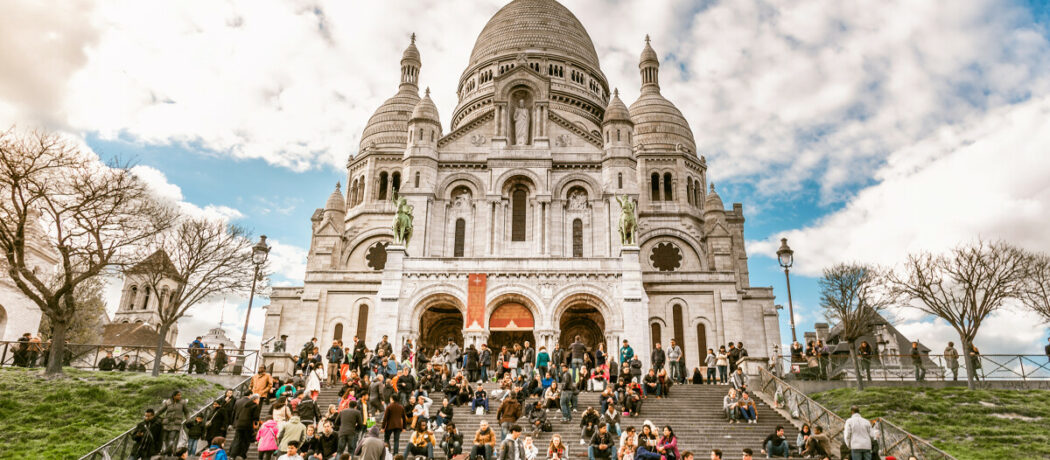‘Dear tourists… get lost!’: When social contagion creates tourismophobia

Share
Every holiday period now seems to give rise to a flow of news stories illustrating the negative consequences of the influx of tourists in cities or natural sites, resulting in a real “tourismophobia”.
Given the centrality of social networks and the hyperconnectivity of our world, it is interesting to consider the role that tourists’ online behaviours can play in the development of this phenomenon, as well as the potential influence of these online behaviours on “real life”.
Our research indicates that these two types of behaviours (on the Internet and in the physical world) are closely interlinked and influence each other through social-contagion mechanisms. These mechanisms amplify the potential harm of these behaviours – yet they also point to ways of counteracting their effects.
“Deviant” behaviours
The term tourismophobia refers to the strong aversion that local populations can manifest toward tourists. Such a reaction may seem surprising at first, because tourism is generally viewed as a driver of local economic activity. However, the proliferation of tourist behaviours deemed “deviant” can feed resentment, or even outright hatred toward tourists.
For example, in January of this year, tourists from Brazil, Argentina, France and Chile were arrested in Peru for defiling the site of the Temple of the Sun in Machu Picchu. Similarly, a controversy arose in early 2018 after the publication of a video by American Logan Paul in which he appears in a Japanese forest known for being the scene of suicides – a video in which a dead body is shown. As a further example: in 2014, in Barcelona, the sight of Italian tourists walking naked and inebriated triggered protests by city residents.
These behaviours are called “deviant” because they deviate from generally accepted or observed behaviours by violating social norms, rules or even the law. They can be common among tourists who, outside of their home environment, feel free from the social constraints to which they would normally conform. These behaviours can irritate or outrage the people (other tourists or residents) who respect these norms, laws or rules. They can also damage monuments or natural places. For example, in Rome, the Trevi Fountain is often stormed by tourists who defy swimming bans. What appears to be contempt for the historical heritage reinforces local residents’ resentment toward all tourists, leading to the authorities imposing new, more restrictive rules on all (deviant or not).
These behaviours are increasingly fuelled by the desire to show off online – a behaviour identified as another type of deviance, this time virtual. Social networks such as Facebook, Twitter, Instagram, TikTok and Snapchat enable the sharing of photographs or videos of “exploits” that gain in appeal when they are carried out in off-limits locations or situations. They generate a real spiralling effect: a person’s real-world deviant behaviour fuels their online deviant behaviour (for instance, posting content aimed at gaining their followers’ admiration), which in turn generates new deviant behaviours by others in the real world.
Socially contagious behaviours
On seeing such behaviours, followers are also encouraged to imitate them – or adopt even more outrageous behaviours – and relay them on their own social networks, entering into an image and ego competition. This phenomenon, known as social contagion, occurs through a permanent back-and-forth between the real and virtual worlds: each new post relaying, on social networks, deviant behaviour that occurred in the real world potentially results in further deviant behaviours, and so on.
There are at least four causes to such social contagion, whether it involves deviant behaviours or not. First, there is the sharing of information between individuals, which intervenes here through photos and videos, but also through simply observing deviant behaviours in the real world. Normative pressures are a second possible cause. They are the pressures that individuals feel, to conform to the behaviours of those they are seeking approval from. For instance, people will go to a protected or off-limits site to take a photograph that will earn them “likes” on social networks because of its uniqueness.
The third cause is competitive pressure. It occurs when people put themselves in competition with others, trying to outbid one another, resulting in the adoption of behaviours that are even more deviant than that that originally occurred. Thus, during a recent trip to Iceland, one of the authors of this article was struck by the behaviour of tourists catching increasingly larger pieces of iceberg to take photographs with, even entering the icy water to break the small blocks of ice, returning to shore with their “trophy” and leaving it lying on the ground after the photograph was taken.
Finally, social contagion can also occur when the benefits of adopting a certain behaviour increase with the number of individuals adopting it. Tourists wishing to party will thus gravitate toward the bars or clubs that have long queues on the pavement, increasing in the process the noise and potential nuisance levels in the neighbourhood.
Reversing social contagion
Our research further reveals the existence of at least five amplifiers of social contagion between virtual and “real” worlds:
- The considerable reach of the Internet (ease and freedom of access to as many people as possible).
- The anonymity afforded by the Internet (although it is becoming increasingly relative).
- The reproducibility of information, which enables its viral dissemination.
- The longevity of the information, which remains accessible long after its initial dissemination (deviant behaviours broadcast years ago can reappear any time and go viral again).
- Finally, the ease of communication at the heart of social networks.
Nevertheless, there are at least two ways to break the vicious cycle of the social contagion of deviant behaviour. First, not all deviant behaviours are voluntary: they may be the result of misunderstandings (for example, related to language) or lack of knowledge of the cultural context or local regulations. It is then possible to communicate and educate tourists to adopt behaviours aligned with local norms.
This was the approach taken by the city of Amsterdam with their “Enjoy and Respect” campaign, to raise the awareness of tourists tempted by inappropriate behaviours.
Second, social contagion can also be reversed. In this scenario, a person observing deviant behaviours, or even merely the consequences of such behaviours, adopts a reverse behaviour aimed at correcting the negative effects of this deviance. For example, tourists confronted with other tourists degrading an architectural or natural site may intervene and ask them to stop. They may also attempt to limit or reverse the damage done, for example by collecting rubbish that others would have left behind, or by posting online photographs showing the disastrous results of such behaviours in order to raise the awareness of future visitors.
This article is republished from The Conversation under a Creative Commons license. Read the original article.
You can find more articles from Professor Loïc PLE here.



